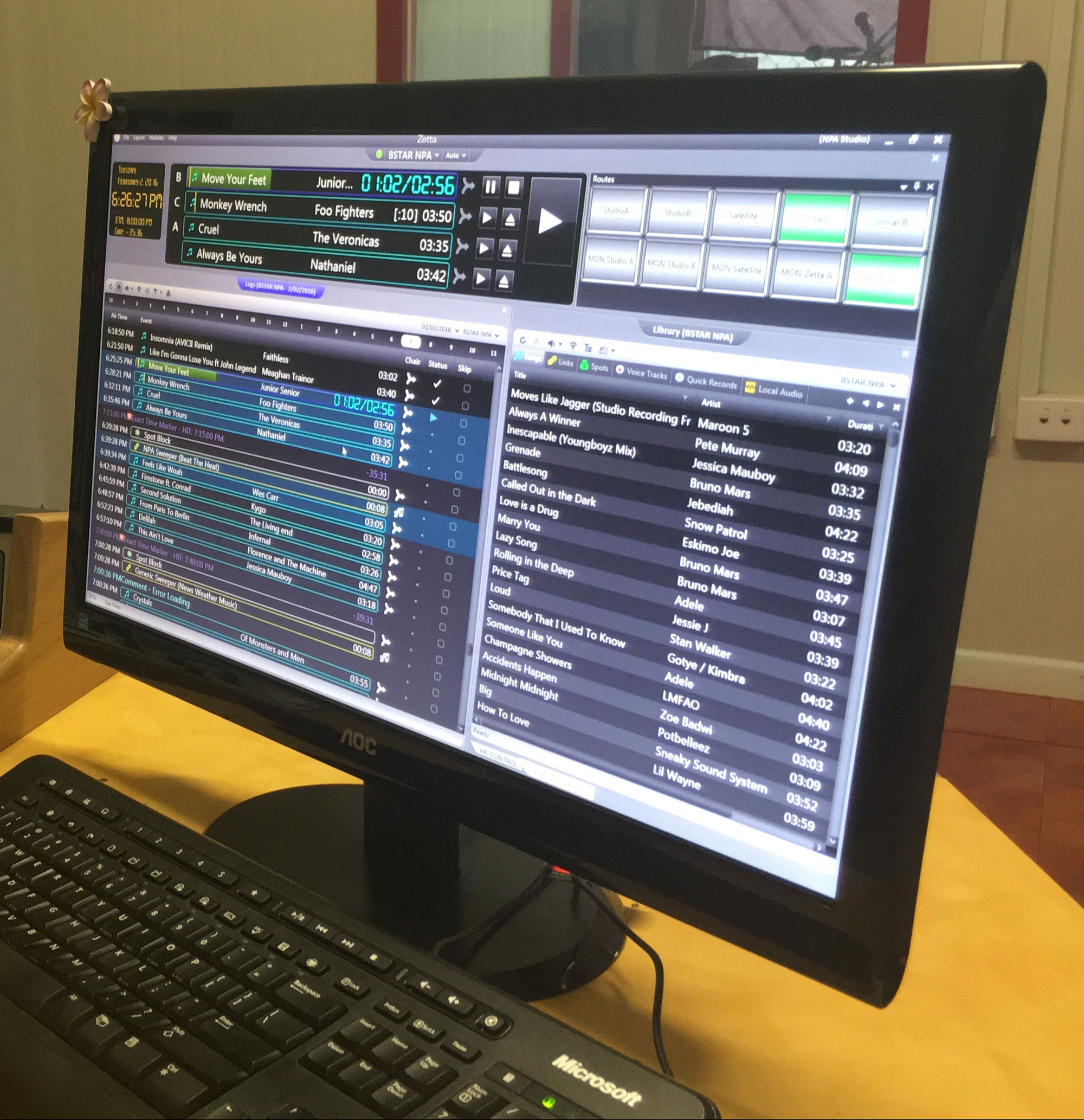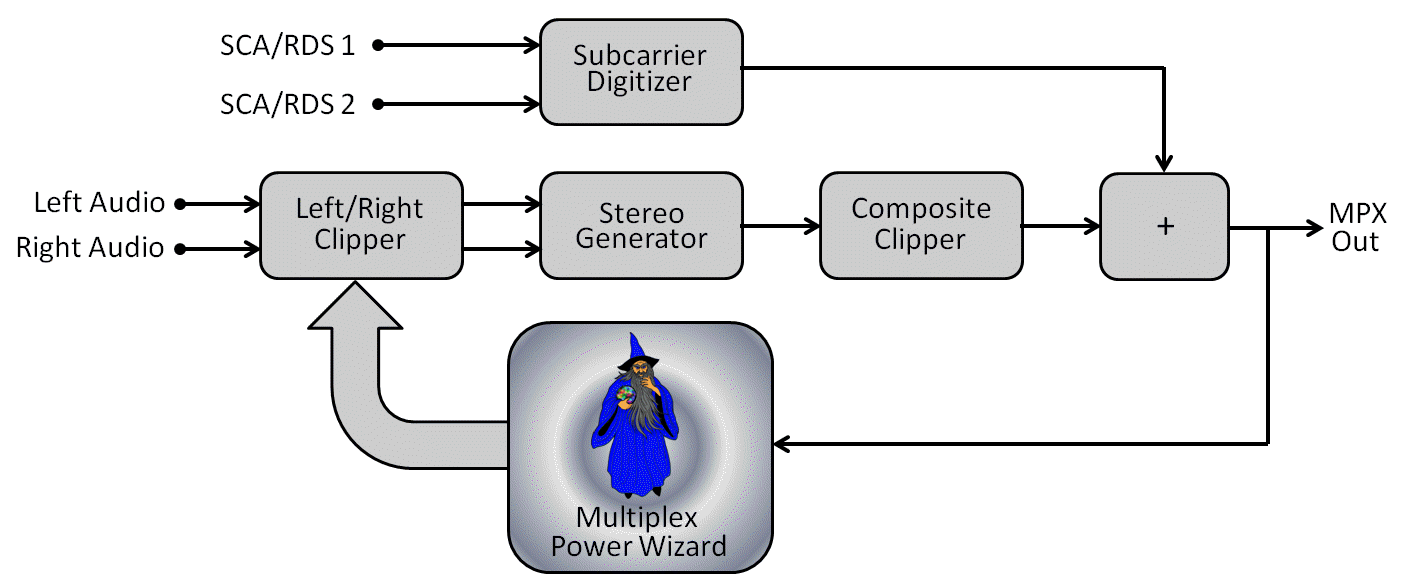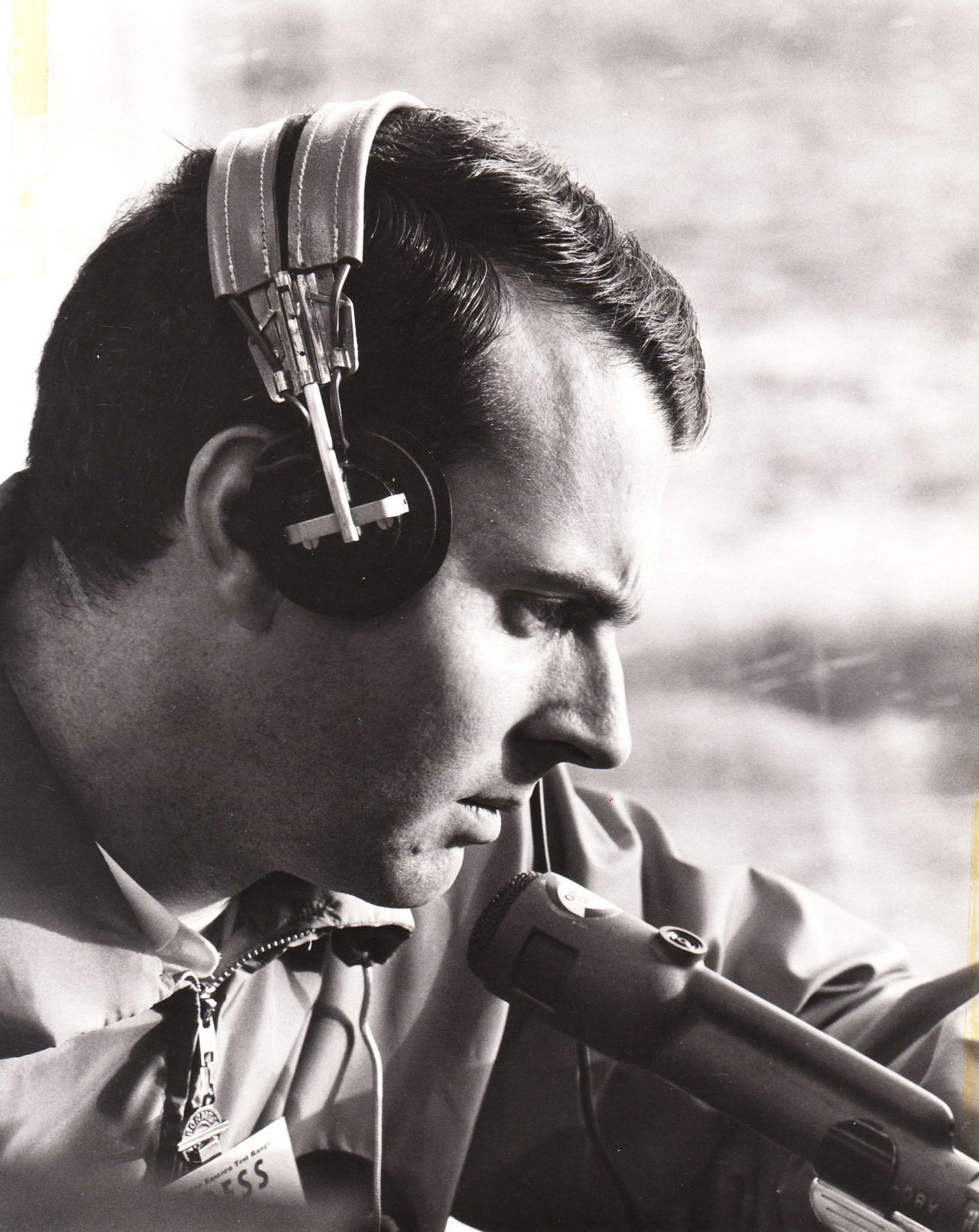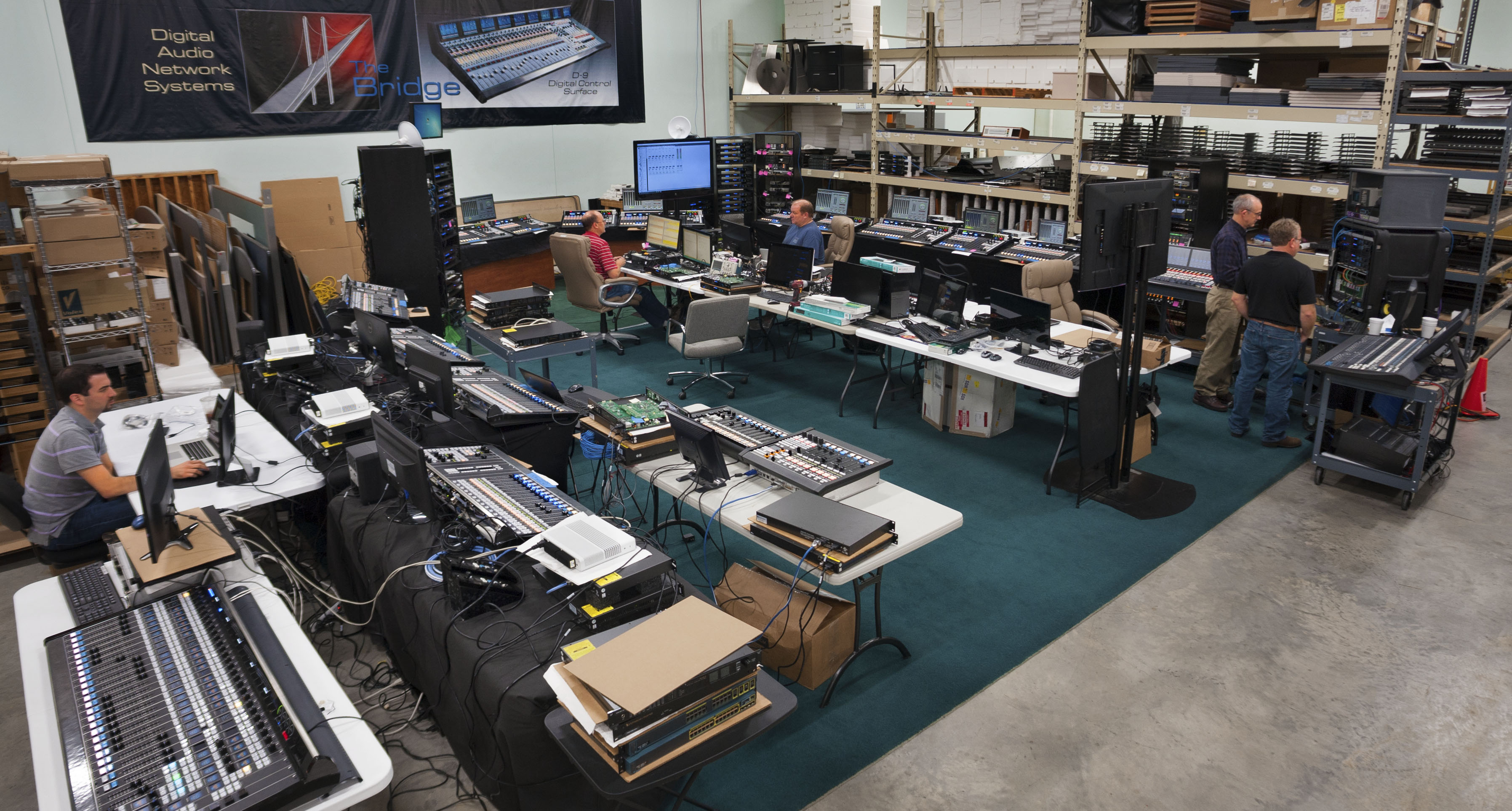WHEAT:NEWS RADIO
OCTOBER 2016 - Vol 7, No.10
Got feedback or questions? Click my name below to send us an e-mail. You can also use the links at the top or bottom of the page to follow us on popular social networking sites and the tabs will take you to our most often visited pages.
5 Things You Can Do Now to Avoid Disaster
As we write this, Hurricane Matthew is just about to make landfall in our neighboring state of South Carolina. Here at the Wheat factory in New Bern, North Carolina, we are listening intently to weather reports on the radio and giving some thought to disaster proofing the studio. These made our top-five list.
1. Use separate electrical circuits. You put in redundant power supplies, redundant computers, redundant everything but you’re running all of that off the same electrical circuit? No. Just no. Separate your operation into zones, and run each zone off a separate electrical circuit so if one gets overloaded, the others will keep things humming along.
2. Add network switches. You can probably get away with one network switch for all your studios if yours is a small operation, but don’t do it. It’s far better to add edge switches to each studio or studio group than to take the chance that that one switch won’t fail and take the entire network down with it. Your network should have a main core Ethernet switch, and at least one edge switch. It’s also a good idea to set up redundant master switches and to cross couple studios to edge switches. In the event of an emergency, you can combine the automation outputs into one feed and route that down the network and out to air. And here’s something else to keep in mind: if it comes down to it, you can always run the station from one I/O BLADE – it has an operating system, I/O, silence sensing, GPIO and mixing inside.
3. Get backup audio to the transmitter. No doubt, your transmitter has backup power. But don’t forget the backup audio loop at the transmitter. This is important should you lose power at the studio or if the STL goes out; you will still be able to get an emergency broadcast out. This can be a regular recorder at the transmitter site rigged to turn on in an emergency, or you can add this contingency as part of your I/O BLADE-3 at the transmitter. (We now have audio playback available right from our new BLADE 3 access units, which can automatically be triggered for playback by silence detection within the BLADE or triggered directly from your console.)
4. Consider two-for-ones. If possible, get gear that can do more than one thing so you’ll have several layers of redundancy to fall back on in an emergency. We’re firm believers in this, as you’ll discover throughout our product lines.
5. Have an exit plan. If you think you have to be glued to the studio during a flood, fire, tornado or other disaster, think again. Any quality IP audio network built for broadcasting should let you move station operations to higher (or lower) ground. In the case of WheatNet-IP, we have remote software that lets you load a virtual console onto your laptop for continued broadcasting just about anywhere.
With the worst of Hurricane Matthew behind us, we’re glad to report that it’s a little wetter around our factory in New Bern, but we got through the storm without incident.
IP Audio in the Outback
When we learned there’d be a new radio station in the Australian Outback, we didn’t immediately think of modern IP audio gear. Rather, we imagined backpacking in military-issue gear with sensible metering and saucers for knobs.
Which is odd because we pretty much think about IP audio all the time.
But we are talking about Cooktown after all, one of the last frontiers nestled in the hills just above the rainforest in the Queensland Outback. Cooktown gets its name from the notorious Captain James Cook, who arrived there after his ship ran into the Great Barrier Reef nearby. This small community of 5,000 people, many of them members of the Guugu Yimithirr aboriginal tribal nation, has one road into it – when weather permits.
Cooktown happens to be in one of the more active cyclone regions in the world.
To say that the area in and around Cooktown is inhospitable to broadcast media is an understatement, but that didn’t stop Queensland Remote Aboriginal Media (QRAM) from building a transmitter site on Mount Tully and installing what is believed to be the first remote transmission site in Australia operating from an all-digital backend platform. With the technical help of Agile Broadcast, the station went on the air on 96.9 FM last month with a WheatNet-IP audio I/O BLADE and RCS Zetta playout system into a Nautel VS transmitter atop Mount Tully, all of which is networked to the group’s main hub studio about 325 km away in Cairns where programming originates. “When we shut that door and walk away from the transmitter, we don’t know how long it’s going to be before we get back there again. We spent two years researching the equipment,” says Gerry Pyne, the General Manager of QRAM, which has a reputation for keeping information and programming going during local emergencies.
QRAM has more than a dozen other sites in the remote regions of Australia that are part of its Black Star radio network, an AC/CHR format originating from Cairns and piped to each site by way of a virtual private network out of Sydney. QRAM inserts local programming, often voicetracked from Cairns, as well as separate spot loads and weather reports targeting each.
For many in these remote communities, Black Star is the only local-interest radio service for miles around and the only voice in the event of an emergency.
In the case of Cooktown, television and radio services in the area tend to be satellite delivered, which means that during a cyclone, rain fade often blanks out those services. QRAM uses telecom connectivity instead. It takes advantage of a geographic WAN configuration with programming stored and played at each transmitter, all of which operate autonomously and independently from each other. If this sounds familiar, it’s because we use a similar approach for our WheatNet-IP audio network in that each I/O BLADE at any access point in the network is self-contained and fully autonomous to provide intelligence, redundancy, and system recovery in the event of a failure.
In fact, the I/O BLADE-3 is what provides this same autonomy to QRAM’s new transmitter site on Mount Tully. The BLADE-3 brings in programming from Cairns via IP audio connectivity, which is stored locally at the transmitter site on the mountain and later played back via the RCS Zetta automation system (which uses RCS’ remote replication technology). The BLADE-3 and Zetta system are tightly integrated and able to exchange commands easily because of Wheatstone’s ACI protocol. Should Mount Tully lose Internet connection for a day or two days, the station is able to continue broadcasting as usual. Moreover, the BLADE-3 also has an audio clip player onboard where emergency programming is stored. Failover to the player is automatic in the event that the WheatNet-IP audio system detects silence.
Getting Control of MPX Power to Reduce Adjacent Channel Interference
Reducing multiplex (MPX) power can greatly reduce adjacent channel interference, which is why MPX power reduction is practiced in Europe and other regions where short-spacing between FM frequencies is a reality.
Unfortunately, multiplex power control and audio signal quality can be directly related.
Can broadcasters adhere to the European ITU-R BS.412-7 mandatory modulation standard without adversely affecting the sound of the station?
The short answer is ‘yes.’
Our engineers have invented the Multiplex Power Wizard, a new algorithm that keeps MPX power in check without creating the undesirable artifacts typically associated with controlling MPX power. Now a standard feature in our FM-55 audio processor and SG-192 stereo generator, the Multiplex Power Wizard continuously adapts the MPX power to the incoming program content. Broadcasters benefit from precision control of MPX power while reducing adjacent channel interference, and without objectionable processing artifacts such as unnatural gain swelling or gain pumping that are usually heard in other MPX power controllers.
Our new Multiplex Power Wizard is standard in FM-55 audio processors and SG-192 stereo generators running software version 1.2.19 (or higher). Version 1.2.19 software can be downloaded free of charge here:
FM-55 Gui PRO Setup v1.2.19
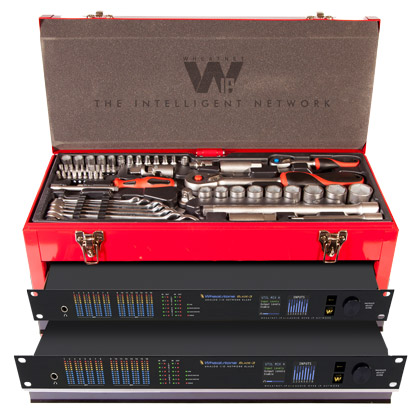
Your IP Question Answered
Q: We’ve just started planning a new studio facility and our manager suggested we look into IP routing to be able to reuse one studio for multiple purposes, rather than have two or more dedicated studios for a single purpose each. True?
A: Yes. IP is a very flexible platform, and therefore makes it so much easier to share resources and to change studios for multiple purposes. IP gives you so many more options in how to set up a board, for example, and how to connect to the resources you need. You can essentially go from a dedicated studio used one or two hours out of the day for a particular show or newscast, to the full use of that studio throughout the day for a number of purposes. The flexibility of an IP routable audio console is really the crux of this, because you can change mic feeds, IFB connections and reset processing settings, either on the fly or using presets.
BLADEFEST Redux
This is where we do it all -- engineering, manufacturing, and testing, right here in our New Bern factory! Shown is one of our larger IP audio systems being put to the test. If you look closely, you’ll see more than 20 consoles, at least two dozen talent stations, and a handful of audio processors networked through 35 I/O access units (BLADEs), including a MADI interface and AES67 connectivity, with routing by four Cisco core switches and more than 20 Cisco peripheral switches.
We fully burn in and test each system we sell – every component, the way every component works with every other component, AND the way it all works with other gear in the customer's studios (via our ACI and, of course, AES67).
Jay Tyler's IBC Tour of the LXE Console

Wheatstone
-
Entertainment Network India (Kolkata, India) purchased two IP-16 digital audio consoles.
-
Hangzhou Radio (Hangzhou, China) purchased three LX-24 control surfaces for an existing WheatNet-IP audio network through Audio Design Company.
-
KIFI-TV (Idaho Falls, ID) added another I/O BLADE to an existing WheatNet-IP audio network.
-
Sinclair’s KIMA-TV (Yakima, WA) purchased an E-6 control surface and WheatNet-IP audio network.
-
University of Nevada’s KUNR-FM (Reno) purchased two IP-12 digital audio consoles, an IP-16 digital audio console with WheatNet-IP audio network I/O BLADEs, WDM drivers and NAVIGATOR 3 software and EDGE Network unit.
-
AMI (Toronto, ON) purchased an E-1 control surface, four TS-4 talent stations, Glass E virtual mixer and NAVIGATOR 3 software with WheatNet-IP audio network I/O BLADE through Ron Paley Broadcast.
-
Bustos Media (Portland, OR) purchased an IP-12 digital audio console and I/O BLADE plus M4IP-USB four-channel mic processor for an existing WheatNet-IP audio network.
-
CBC (Edmonton, AB) added an I/O BLADE and GP16 panel onto an existing WheatNet-IP audio network through Marketing Mark Vallee.
-
Larche Communications (Orillia, ON) purchased an EDGE network unit to extend an existing WheatNet-IP audio network through Ron Paley Broadcast.
-
Cavaliers (Cleveland, OH) purchased an IP-12 digital audio console, four TS-4 talent stations, an I/O BLADE and a M4IP-USB four channel mic processor for an existing WheatNet-IP audio network.
-
Rogers (Toronto, ON) purchased WDM drivers and an I/O BLADE for an existing WheatNet-IP audio through Marketing Mark Vallee.
-
CKRZ-FM (Hamilton, ON) purchased an L-12 control surface, M4IP-USB four channel mic processor, I/O BLADE and NAVIGATOR 3 software through Ron Paley Broadcast.
-
Skyview Networks (Scottsdale, AZ) purchased WDM drivers for an existing WheatNet-IP audio network.
-
CICW-FM (Fergus, ON) purchased an LX-24 control surface, I/O BLADE, WDM driver and NAVIGATOR 3 software through Ron Paley Broadcast.
-
University of Arizona’s KUAT-FM (Tucson, AZ) purchased an E-1 control surface and BLADE for an existing WheatNet-IP audio network.
-
Armed Forces Network (Riverside, CA) purchased an E-6 control surface, several I/O BLADEs and WDM drivers for an existing WheatNet-IP audio network.
-
CJRG-FM (Gaspe, QC) purchased IP-12 and IP-16 digital audio consoles with I/O BLADE, NAVIGATOR 3 and WDM drivers plus two M4IP-USB four channel mic processors through Marketing Mark Vallee.
-
WAGA-TV (Atlanta, GA) purchased a Dimension Three console with touchscreen and WheatNet-IP audio network.
-
Sinclair’s WSBT-TV (Mishawaka, IN) purchased an E-6 control surface with WheatNet-IP audio network.
-
U.S. Customs and Border Protection (Washington, DC) purchased Glass-E virtual mixer software for an existing WheatNet-IP audio network.
-
Emmis (Austin, TX) purchased an LX-24 control surface.
-
iHeartMedia (Baltimore, MD) purchased three IP-12 digital audio consoles with WheatNet-IP audio network I/O BLADEs.
-
WHNT-TV (Huntsville, AL) purchased I/O BLADEs and NAVIGATOR software upgrade for an existing WheatNet-IP audio network.
-
KBRX-FM (O'Neil, NE) purchased an IP-12 digital audio console and I/O BLADE.
-
iHeartMedia (Montgomery, AL) purchased an IP-12 digital audio console.
-
iHeartMedia (Augusta, GA) purchased an IP-12 digital audio console.
-
iHeartMedia (Grand Rapids, MI) purchased three LX-24 control surfaces with I/O BLADEs.
-
iHeartMedia (Atlanta, GA) purchased an LX-24 control surface with I/O BLADEs.
-
iHeartMedia (Chattanooga, TN) purchased an IP-12 digital audio console.
-
Cumulus (Birmingham, AL) purchased two IP-12 digital audio consoles.
-
RTE (Dublin, Ireland) purchased three IP-12 digital audio consoles with WheatNet-IP audio network I/O BLADEs.
Audioarts Engineering
-
KSIG-FM (Crowley, LA) purchased an Air-4 console.
-
WKTN-FM (Kenton, OH) purchased an Air-1 console.
-
WFLM-FM (Vero Beach FL) purchased an Audioarts 08 console.
-
WBEJ-AM (Elizabethton, TN) purchased an R-55e console.
Wheatstone Audio Processing
-
Broadcast World USA (Manilla, Philippines) purchased an AirAura X1 audio processor.
-
Jim Pattison (Kamloops, BC) purchased an M2 dual channel mic processor and M4IP-USB four channel mic processor through Ron Paley Broadcast.
-
KCBI-FM (Dallas, TX) purchased an FM-55 audio processor.
-
Minnesota Wild (Minneapolis) purchased an M4IP-USB four channel mic processor onto an existing WheatNet-IP audio network.
-
CKRZ-FM (Hamilton, ON) purchased an AirAura X3 audio processor through Ron Paley Broadcast.
-
University of Nevada’s KUNR-FM (Reno) purchased an FM-55 audio processor.
-
iHeartMedia (Baton Rouge, LA) purchased six M1 mic processors.
-
iHeartMedia (Miami, FL) purchased three M4IP-USB four channel mic processor BLADEs.
-
AMI (Toronto, ON) purchased an M1 mic processor and MP4IP-USB four channel mic processor BLADE through Ron Paley Broadcast.
-
The Lamp Group (Nashville, TN) purchased an M1 mic processor.
VoxPro
-
Audio Design Company (Hong Kong) purchased a VoxPro 6 digital audio recorder/editor.
-
WNUA-FM (Chicago, IL) purchased a VoxPro6 digital audio recorder/editor.
-
KEXX-FM (Phoenix, AZ) purchased a VoxPro6 digital audio recorder/editor.
-
Entravision (Sacramento, CA) purchased three VoxPro6 digital audio recorder/editors.
-
KRBB-FM (Wichita, KS) purchased a VoxPro6 digital audio recorder/editor.
-
IHeartMedia (Greenville, SC) purchased a VoxPro6 digital audio recorder/editor.
-
Cumulus’ WQQK-FM (Nashville, TN) purchased a VoxPr6 digital audio recorder/editor.
-
iHeartMedia (Portland, OR) purchased a VoxPro6 digital audio editor/recorder.
-
Oakwood (Mississauga, ON) purchased a VoxPro6 digital audio recorder/editor.
-
iHeartMedia (Honolulu, HI) purchased a VoxPro6 digital audio recorder/editor.
-
YEA Networks (Irving, TX) purchased a VoxPro6 digital audio recorder/editor.




